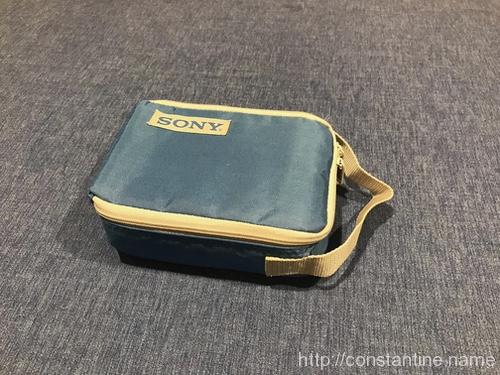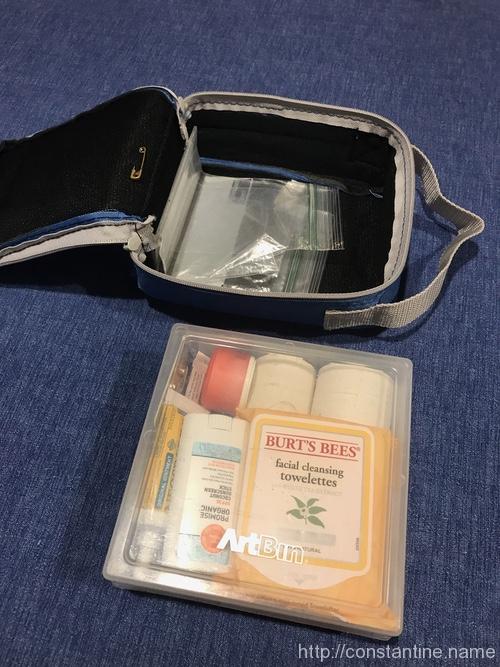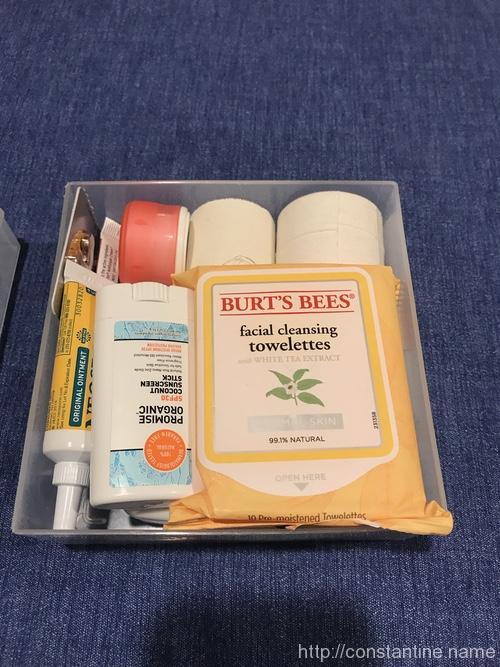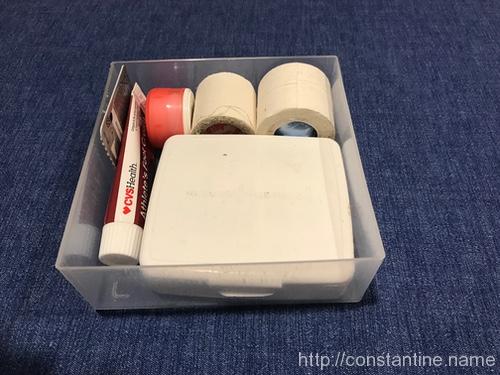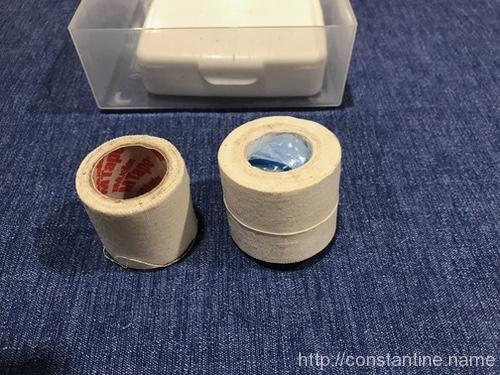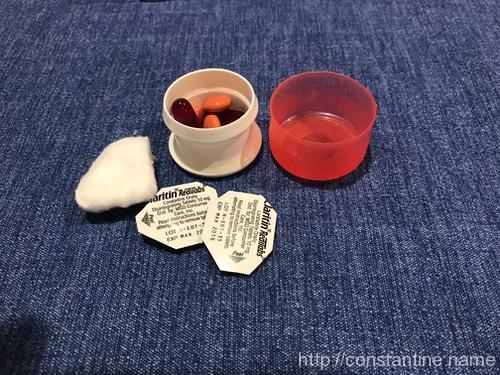This post is entirely rules, tips, and ideas about how to be an insanely great guest in someone’s home. It’s organized into three sections. The first two sections are meant to get you thinking about how your host, and other guests, perceive you. The third section is focused on the day-to-day details of living in an unusual space. It’s meant to get you thinking about solutions to problems, and ways to make travel more enjoyable.
tl;dr: Empathy.
For my purposes here, empathy is the psychological identification with the feelings, thoughts, or attitudes of another person. I’m not suggesting that you must continuously empathize with everyone. I’m suggesting that empathy is a tool that can be used to inform your plans and behavior. Simply put, artfully using the soft skill of empathy will transform you into a great guest.
Why Bother?
Do unto others as you would have them do unto you. Why? Because decent human beings treat other human beings decently. (Did I need to write that? I hope not.)
If you are not already motivated to improve and to be a good guest, consider these benefits:
Lubrication: If your host likes you, they’ll interact with you more, you’ll experience more of their life, knowledge, and culture, and they may even help you more by driving you somewhere, or introducing you to someone. There is a wide margin of experiences which you cannot plan. But if things are going well via your being an awesome guest, then you’ll more often find yourself invited into that margin by your host.
Pete and Repeat: If you want to be invited back, you need to be a good guest. If you enjoyed a first visit (with your host, to the community, to the city, to the country), you’d probably enjoy a second visit. Notably, second visits are logistically easier because you know the lay of the land. So it’s a double-win if you visit again. Rare and valuable are hosts who become true friends through repeated visits.
Avoiding self-sabotage: Invitations generally only appear when meeting someone in person, so new invitations are fairly rare. If you are an annoying guest, your reputation will quietly precede you, and invitations won’t be extended.
Lead from the front: We are social animals. (Everyone varies as to how much social interaction we prefer, but no one is an island.) So it’s wise to help weave the social fabric by setting a good example. An excellent way to save the world is to be the change you want to see in the world. Be the traveler who breaks the ice, (appropriately of course,) who dives into the distasteful chore, who finds ways to include everyone, and who kicks off the cascade of cohesion and camaraderie.
The Cardinal Sin
Invitations are never extendable to others; Never invite another person to your host’s home.
Invitations are never extendable to others; Never invite another person to your host’s home.
Corollary: Be cautious with social media. Avoid, revealing your host’s exact address, or the details of their private life.
Here are cringe-worthy examples I’ve seen: Someone you’re training with needs to use the bathroom? Someone needs a place to stash their belongings? A place to shower? A place to crash for the night? No, no, no and no. You should always and forever consider yourself a guest. Guests are, by definition, not the host and only the host can invite others.
Treat your host’s home like a magic kingdom. It’s a rare privilege, reserved for the select few, to even know where it is located, let alone be permitted to glimpse the interior. Only your host may pierce that veil and reveal the kingdom to those whom they alone choose.
I’ve spoken to many people, and there are differing views held by persons in the guest role. Some incorrectly believe that a guest’s behavior may change, pushing, or crossing, the boundaries I’m describing, based on the host and the situation. (Pro-tip: Be the host and then you can do whatever you want. Until then, you are a guest.) The guest’s role is unwavering. Hosts and their “homes” vary widely from open-door, dog-pile, continuous-house-parties, to Zen-temple-like retreats of peace and quiet known to only a select few. The boundaries of acceptable behavior are set by your host, will vary widely, and are usually not explicitly detailed. But that variety in homes and boundaries does not change the guest’s role and responsibilities in the least.
Lead from the front, be considerate, and practice empathy.
15 Suggestions
Be careful what you wish for: Your host may go out of their way to arrange something you didn’t actually want. If this happens, you should follow through with what you asked, enjoy it, and remember to pass your heartfelt thanks to your host. (Ask me the story about the swimming pool in Japan.)
Be predictable: Since, as a good guest, you are actively paying attention to how your presence is imposing on your host, you can work to minimize friction and problems. Once you start to see how this works, you’ll think of a myriad of small things you can do to be predictable. Think about your communications from your host’s point of view. (Here’s that empathy skill again.) Always let your host know what to expect.
Everyone has routines: Your mission is to figure out your host’s routines, and to figure out what their intentions are. (The later is much harder than the former.) Do they want no disruption of their normal routine, or do they want to get up early to do things with you? Do they want you to feed yourself, or do they deeply enjoy cooking and sharing meals? The inroad here is found by realizing that your goal is to make your interaction with your host, and your affect on them, intentional.
Sleeping: The biggest challenge is to tease out when your host expects to sleep and expects to awake, and to try to fit yourself to that. This can be hard to do well. If you wait too long, they will eventually ask you, and it can get awkward if you give an exact response—”I go to sleep at 9:30 and get up at 5:30″—if that is significantly different from their normal routine. I usually open the conversation about sleeping by mentioning what time I need to get up (for an event, transportation logistics, etc..) But, challenges can still arise because sleep is the thing I’ve arranged my life around, and it is rare that I encounter others with this same level of attention to sleep.
Scheduling: Of course, if you have a specific thing to do (event, train, plane, etc), and they watch TV (or play games, etc.) at night, you should join them a little, but then go to sleep. Hopefully your sleep spot is out of the way. Sometimes sleeping on the floor is great because you can say goodnight and head off to your nest. Sometimes sleeping on the floor is a problem if your assigned space is the common space where staying-up is happening. Know your schedule in advance and factor that in when planning where you’ll sleep.
Bed: In the morning, stow your bed by putting your sleep system away or putting the sofa back together. If you’ve found yourself in a guest bedroom, make the bed.
Bathroom etiquette: This is hero-level stuff done by dream guests. If the shower is in the only bathroom, before you head to the shower, politely ask if anyone would like to use the bathroom. Always bring all your own bathroom stuff, (soap, shampoo, whatever you need, you should be able to carry it when traveling.) Leave absolutely nothing in the bathroom. (If there are multiple guests, the bathroom can get insane.) The exception would be your towel: If you’re the only guest, it should be hung neatly to dry in the bathroom. But if there are lots of guests, your towel needs to go dry in your sleeping space. (If you have a tech towel that dries quickly and shower before bed, it will dry by morning in your sleeping area.)
…and more Bathroom tips: Showering at night keeps the bedding cleaner, (your host’s, or yours if you’re using your sleep system.) Technical clothing that dries quickly can be washed with you as you shower to dry as you sleep. Take cooler showers to save hot water for others, and to make less fog in the bathroom. Always run the fan. Next, imagine you are being timed while in the bathroom. …and imagine there’s a line of people waiting. …and then imagine yourself waiting desperately in that line to use the bathroom. If there are many guests, get yourself presentable as quickly as possible, and then crack the door while finishing up the things you can do while dressed. Most people will knock on the door if it is cracked open. You can then pause your work to politely step out for them.
If you are handy: Fix things. But only if you are absolutely sure you can succeed! Sometimes you can just leave things a touch more organized, more clean, or less broken, then when you arrived. Do not make a big deal of it nor point out what you’ve done.
Disappear during the day: Not only you body, but all your stuff too, should disappear! Either carry everything with you whenever you leave, or have a large bag to leave at your host’s. (There are large, packable duffels that take up little space when stuffed.) This enables your host to move all your stuff easily if needed. (It also tends to keep children and pets out of your stuff.) If you do this well, instead of your host feeling like you’re there for three days, it’s more like three, separate, one-night visits; They have fun sharing a meal, some conversation, then everyone’s asleep, and then it feels like your visit ends in the morning.
Refrigerators: Use the fridge, but remove all of your stuff. Seriously, no one will eat your left-overs, (except obviously useful items like eggs.) If your host gives you a tour of the fridge, (literally, or by mentioning it in passing,) then do eat/drink their stuff. If they do not mention it, do not touch their stuff. Mastery level: change your eating habits so you don’t eat breakfast. Find your lunches and dinners out-and-about and place zero food-load on your host. Then, if they want to eat socially, you can add that back in.
Not seen and not heard: By default you should be invisible, and as quiet as a mouse. Make no noise, don’t watch TV, play games, etc. Let your host lead. If they want to interact, make noise, watch TV, playing games, etc., then join in!
Before arrival: Tell your host how and when you are arriving (“My train gets in at 4:30, so it will be about 5 by the time I get to your place by subway.”) This way they know when to expect you, and that you are not expecting them to pick you up. Then, if they want to offer you a ride, (or whatever,) they can. You should always be thinking: All I need is shelter and a bathroom; Anything else is icing on the cake. (wifi? electric power?! food?!! …omg awesome!)
Intentional updates: Your host should always know when to next expect to hear from you; This means you make the effort, not that you nag them. When you leave for the day you might say, “I’m not sure what time I’ll be back. I’ll send you a message after lunch.” …or, “I’m going to be late this evening, I’m having dinner with so-and-so.”
Oops happens: When things go wrong, own up to it immediately. If you break something, tell your host. However, if you ask, “can I fix/replace this,” most people will lie and say to not worry about it. Instead, you must first figure out how to fix/replace it, and say, “I see there’s a home depot across town. After breakfast I’ll take the subway over and get another one of these.” Sure, you will miss the morning of the event you came to attend (!), but you broke it and you should be the one who misses half a day fixing it. You’ll learn a hard lesson and be a better person for it.
Review: After each visit, take the time to think about what went well, what went badly, and wether your visit matched up with your expectations. Continuous improvement is the key!
ɕ
